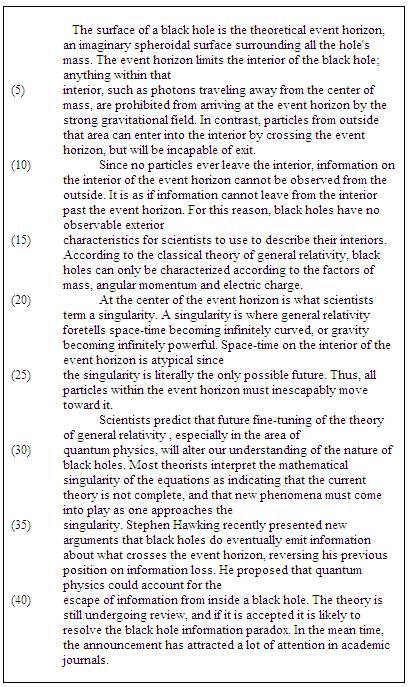Natural Science Passages in LSAT Reading Comprehension
Science passages typically involve topics in biology, chemistry, physics and medicine. Your approach in a science passage should not change — you still use the TestSherpa method. Even though science passages can be intimidating (mostly because few test takers and pre-law students are science majors), you will find that the structure of these passages is very similar to the other passages on the test. As long as you’re not intimidated by technical jargon, you’ll get through just fine.
This is the first in a series of articles about natural science passages in LSAT reading comprehension. The series includes:
- Natural Science Passages in LSAT Reading Comprehension
- LSAT Reading Comp Outlines For Science
- LSAT Science Passage Questions
Natural Science Passages in LSAT Reading Comprehension
Of course, science passages are pretty boring. But that can work to your advantage since they tend to be straightforward and descriptive. Once you get over the intimidation fear factor, you might find science passages to be your favorite. In fact, inference questions in science passages are easy and there are usually more detail questions. If you like scanning for details that are right in front of you, this is the type of passage for you.
General Tips for Science Passages in LSAT Reading Comprehension
Here are some general tips for attacking science passages:
- Don’t be tempted to read science passage in more depth just because they contain dense details — the TestSherpa method works just as well for science passages as for other types of passages.
- Continue to focus on topic, scope, purpose, topic phrases, key words, main idea, and logical structure.
- Don’t be thrown by unfamiliar technical jargon — your job is not to memorize, this is an open book test. You can always look up details later.
- Relax and let unfamiliar words wash over you. Just try to get a feel for the main idea in each paragraph then underline key topic phrases that will help you form your outline.
- Here’s a tip we learned from one of our students: try drawing diagrams in science passages to visualize what’s going on. It may not always work, but many science passages discuss a physical relationship.
Process for Reading Comprehension
Before we see the passage, let’s review the TestSherpa process for Reading Comprehension:
(1) Read the first paragraph and guess at main idea, scope and tone
(2) Read the rest of the passage and build an outline
(3) Confirm your outline
(4) Tackle the questions
Next, use this technique for the following passage.
Take about 8 minutes for the following passage and questions before moving onto the rest of the lesson.

1. The primary purpose of this passage is to
(A) argue for the existence of black holes.
(B) critique the current theories regarding black holes.
(C) describe recent theories involving observable information from within a black hole.
(D) compare Hawking’s theories to those of mainstream researchers.
(E) present evidence that black holes are formed by particles crossing the event horizon.
2. The passage implies which of the following about black holes?
(A) Particles from the interior of a black hole are so transformed when they cross back through the event horizon that they are atypical and cannot be used to characterize the black hole.
(B) The classical theory of general relativity states that black holes cannot be characterized by contents within the interior of the event horizon.
(C) Black holes cannot be characterized by angular momentum.
(D) Electric charge cannot be measured from within a black hole.
(E) We can only make guesses as to the specific mass of a black hole.
3. According to the passage, which one of the following is true regarding singularities.
(A) The singularity is the theoretical spheroidal surface surrounding the mass of a black hole.
(B) The singularity is composed of particles traveling away from the center of mass.
(C) All particles in the interior of the event horizon must move toward the singularity.
(D) Particles move away from the singularity but are bound by the event horizon.
(E) The singularity can account for the escape of information from inside a black hole.
5. The author implies which of the following?
(A) Quantum physics cannot account for the escape of information from inside a black hole.
(B) Certain events have not yet been accounted for in theories regarding the singularity.
(C) Stephen Hawking’s recently presented arguments about information emitted from black holes challenges the accepted views of quantum physics.
(D) Academic journals are only interested in theories from leading physicists.
(E) Mathematical equations indicate that the singularity does not actually exist.
6. The author refers to Stephen Hawking in the fourth paragraph primarily to
(A) illustrate some common misconceptions about black holes.
(B) demonstrate that we are still refining our understanding of black holes.
(C) describe recent theories of quantum physics.
(D) show the differences between quantum physics and theories of general relativity.
(E) reinforce similarities between two theories about the event horizon.
After you’ve attempted this passage on your own, go to LSAT Reading Comp Outlines For Science to see how we constructed our own road map of this natural science passage.
